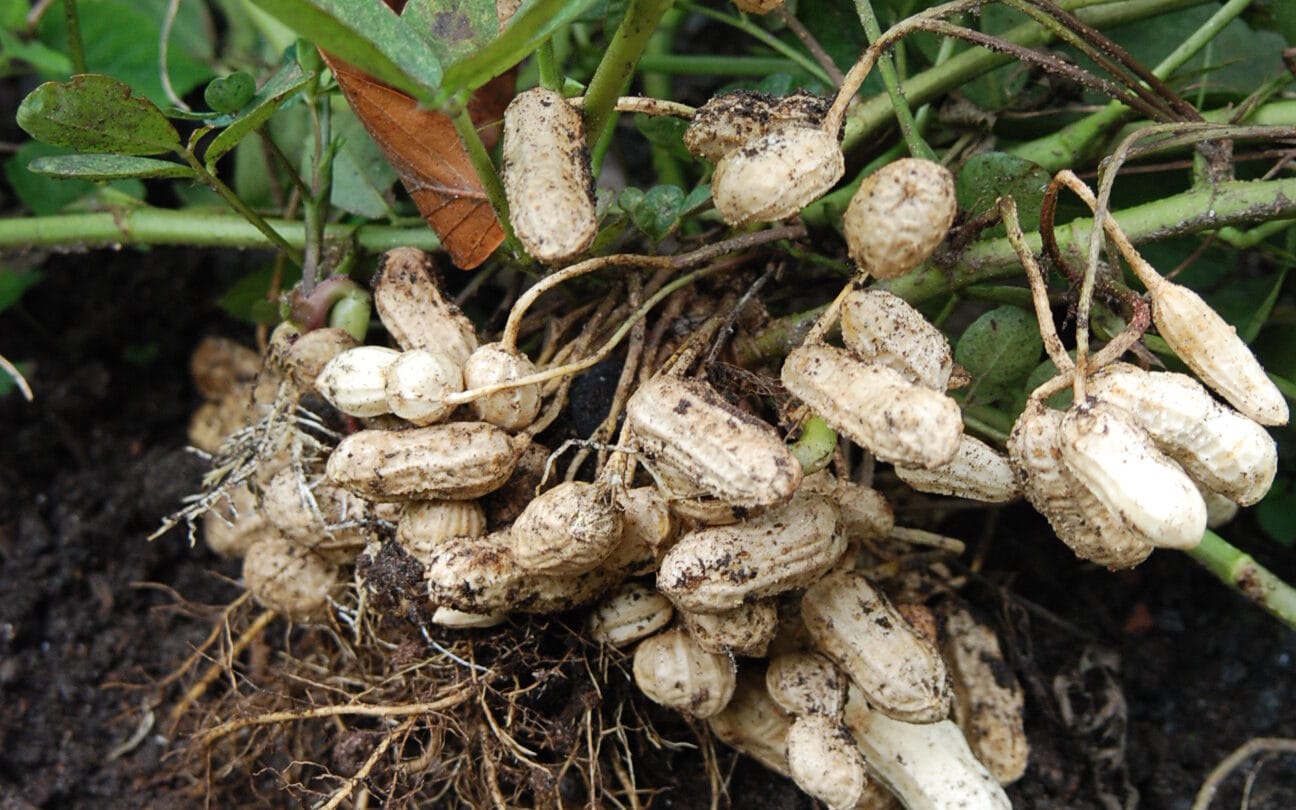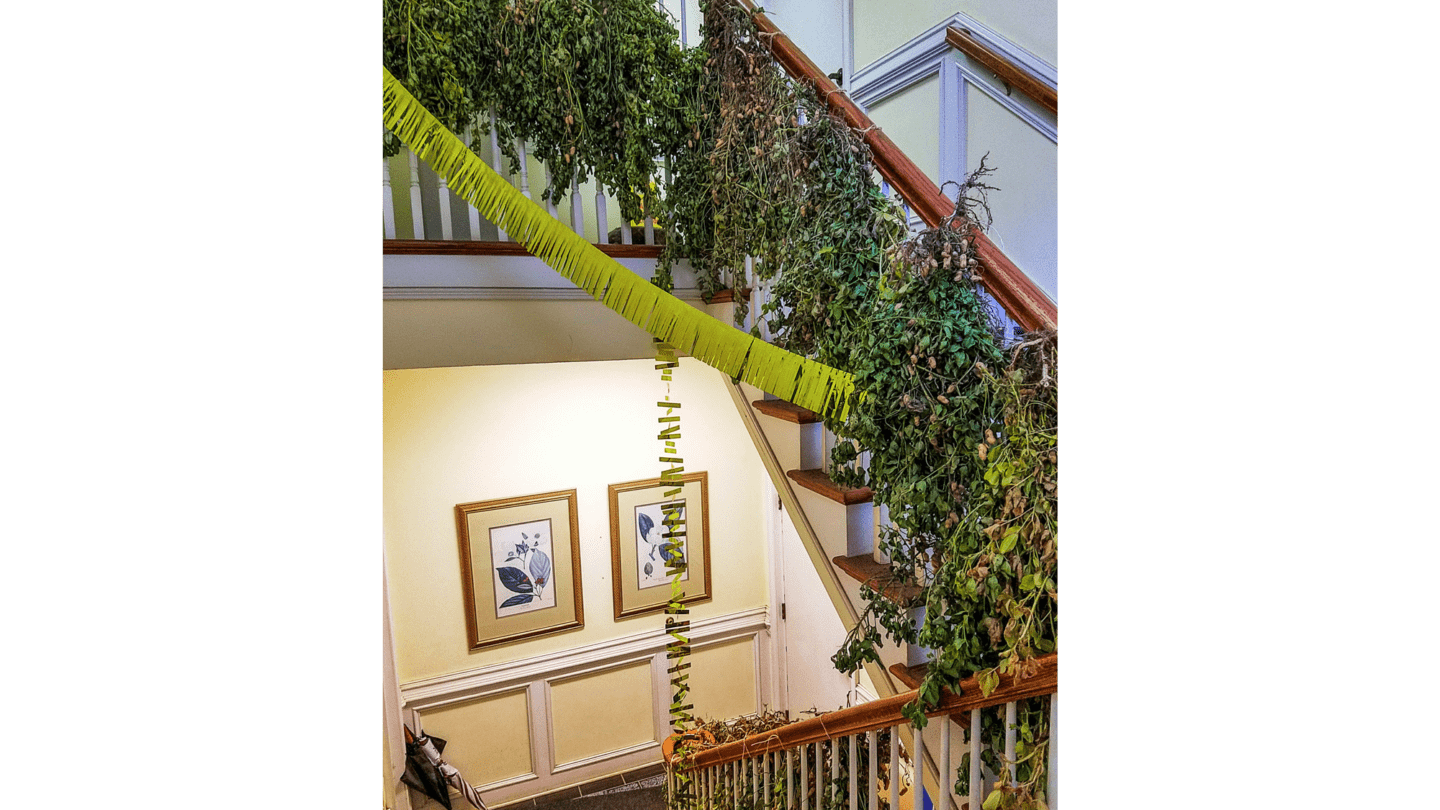
Carolina African Runner peanuts harvested at Smith Farm.
One of the most interesting parts of farming at Atlanta History Center is researching and growing historic plants available in Georgia in the 1860s. I’m often asked, “What is the coolest thing you grow?” There is no easy answer, but one of the best plant stories I have (supported by resources at our own Cherokee Garden Library) is the Carolina African runner peanut.
Peanuts (Arachis hypogaea), like many foods associated with the South, came to the United States via the transatlantic slave trade. Though peanuts originated in South America, the Portuguese and Spanish carried the plant first to West Africa. There, peanuts are called “groundnuts” because their stalks grow “pegs” under the flowers, pushing seed pods into the ground.
Along with enslaved human cargo, European traders brought the transplanted peanuts to the Caribbean and North America in the 17th-century.
Many 18th-century writers observed peanut cultivation in Jamaica. Sir Hans Sloane, an Irish physician, naturalist, and collector, wrote that peanuts were used to feed enslaved people on the forced passage across the Atlantic Ocean. Henry Barham, an English writer and physician in Jamaica, noted that an enslaved person’s garden was the first place he saw peanuts and that enslaved people called them “gub-a-gubs” or “ground nuts.”
The first and only peanut in the earliest years of our country was the Carolina African runner, a variety with spreading vines and small seed pods. Peanuts do best in warm soil and require a long growing season. As a result, they were easily cultivated throughout the South. In 19th century Southern kitchens, many run by enslaved people, peanuts were boiled, ground into meal for fritters, candied, mashed, and decocted into hot beverages, roasted, or pressed into oil.
For many reasons, including their size, productivity, and disease resistance, the familiar Virginia peanut became more popular than Carolina African runners during the Civil War. The last Carolina African runners were grown commercially in the 1920s. By the 1950s, the variety was thought to be extinct.
In 2013, Dr. David Shields of the Carolina Gold Rice Foundation found 40 seeds of this variety in a North Carolina State University seed bank. The university sent 20 seeds to Dr. Brian Ward, an organic agriculture research scientist at Clemson Coastal Research and Education Center. Twelve seeds germinated, and he and Dr. Shields compared the mature plants to a photo from the Sloane Collection at the Natural History Museum in London for confirmation.

African Runner peanuts harvested at Smith Farm are hung to dry from the railings in the Goizueta Gardens office.
From those 12 plants, they harvested approximately 1,200 seeds in 2013—increasing to 60,000 in 2014; one million in 2015; 15 million in 2016. Now, seeds are once again available commercially.
Goizueta Gardens started growing Carolina African runners on Smith Farm in 2017. Each summer since, we plant a few rows alongside heirloom crops. From grasses in the meadow to fruit trees in the orchard to peanuts in the field, Living Collections at the farm are supported by research materials from Cherokee Garden Library.
We hope you will visit us with new appreciation and excitement for historic plant varieties, including (but not limited to) peanuts.

